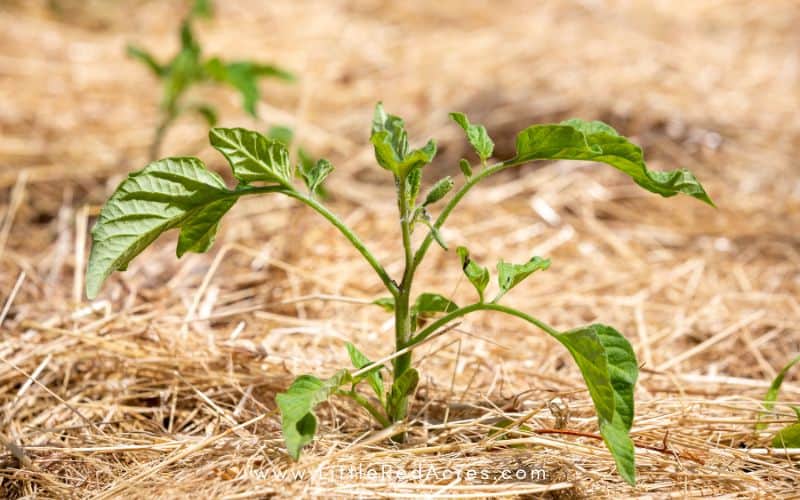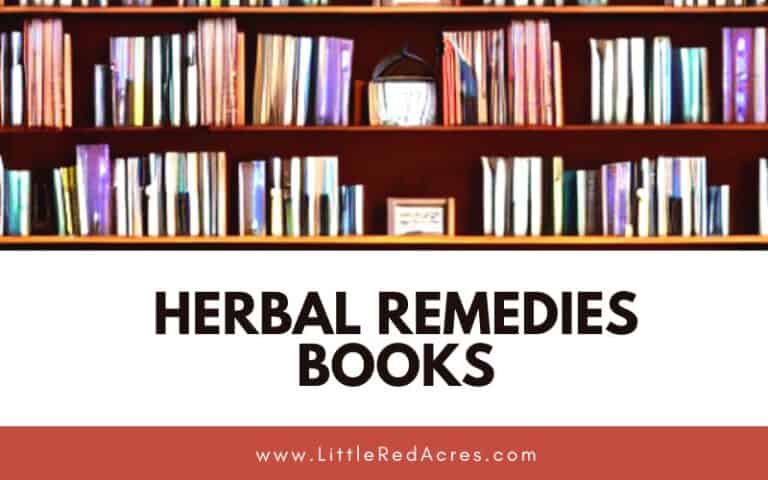The Ultimate Guide to Planting Seedlings: Depth Matters
Inside: Learn the ins and outs of planting seedlings with our comprehensive guide. Discover the perfect depth for your plants to thrive in raised beds, greenhouses, or in-ground gardens.
Ever wonder how deep to plant your seedlings when moving them outdoors? Dive into our essential guide and unearth the secrets to giving your plants the best start in their new home, whether it's a raised bed, greenhouse, or traditional in-ground garden.

This post may contain affiliate links, see my disclosure policy for more information.
The Ultimate Guide to Planting Seedlings: Depth Matters
Have you ever faced the dilemma of planting your lovingly nurtured indoor seedlings outdoors and found yourself puzzling over how deep they should go? You're not alone! This transition is a critical moment in your plant's life, setting the stage for its future growth and productivity.
Get ready to arm yourself with the knowledge to ensure your green babies thrive in their new environment.
Get updates & freebies delivered to your inbox!
Understanding Planting Seedling Depth: The Basics
First things first, let's talk about why depth is so crucial.
Planting your seedlings at the correct depth is akin to setting the foundation of a house.
- Too shallow, and the roots may not establish properly, leaving your plants vulnerable to drying out.
- Too deep, and your seedlings might struggle to break through the soil, stunting their growth or worse, leading to rot.
The key lies in finding that sweet spot, where roots can spread out and access the water, nutrients, and support they need to thrive.

Raised Beds: A Step Above
Raised beds offer a world of benefits for your garden, from improved drainage to better soil quality. When it comes to planting depth in raised beds, there's a golden rule: the depth should be twice the length of the seedling’s root ball.
This ensures that the roots have enough room to expand and anchor the plant. After placing your seedling in a hole, backfill with soil gently, pressing down to eliminate air pockets and ensure solid contact between roots and soil.
When planning a garden, one of the important choices you will make is whether to grow your plants from seeds or transplants. Each approach has its unique advantages and disadvantages and choosing the right method for your needs can be the difference between success and failure.
Planting Seedlings in the Greenhouse
While you're in control of the climate in a greenhouse, the rules of depth still apply. Greenhouse seedlings often have a bit more legroom in their starter containers, leading to longer roots.
As a rule of thumb, aim to plant these slightly deeper than you would in a raised bed, accommodating their extra root length. This deeper planting helps stabilize the taller, potentially leggier, greenhouse-grown seedlings, ensuring they stand firm against the indoor breezes.

In-Ground Gardens: Back to Basics
The timeless tradition of in-ground gardening brings us back to the essence of planting. Here, depth is dictated by the soil's texture and the seedling's size.
A general guideline is to plant the seedlings so the top of the root ball sits just below the surface. This positioning encourages roots to grow downward and outward, creating a stable and robust plant.
Remember, in-ground gardens may vary in soil quality, so adjust your planting depth to ensure your seedlings don't get lost in the shuffle.

How Deep Should You Be Planting Seedlings?
Always ensure the root ball is covered completely with soil.
Tomato Seedlings: Tomato seedlings should be planted deep, burying the stem up to the first set of true leaves. This encourages root development along the buried stem, promoting a stronger, more stable plant. The depth can vary.
Cucumber Seedlings: Cucumber seedlings can be planted slightly deeper than they were in their containers.
Pepper Seedlings: Pepper seedlings should be planted at a depth similar to tomato seedlings, burying the stem up to the first set of true leaves.

Squash Seedlings (including zucchini and summer squash): Plant squash seedlings at a depth of around 1 to 1.5 inches (25-38 mm) deep.
Cabbage Seedlings: Plant cabbage seedlings at a depth similar to lettuce, around 1/4 to 1/2 inch (6-13 mm) deep.
Bean Seedlings (including bush beans and pole beans): Plant bean seedlings at a depth of around 1 to 1.5 inches (25-38 mm) deep.
Melon Seedlings (including watermelon, cantaloupe, and honeydew): Melon seedlings can be planted slightly deeper than they were in their containers, typically around 1 to 1.5 inches (25-38 mm) deep.
Cabbage Seedlings: Cabbage seedlings should be planted at a depth similar to lettuce, around 1/4 to 1/2 inch (6-13 mm) deep.
Broccoli Seedlings: Plant broccoli seedlings at a depth similar to cabbage, around 1/4 to 1/2 inch (6-13 mm) deep.

Spinach Seedlings: Aim for a depth of about 1/4 to 1/2 inch (6-13 mm).
Kale Seedlings: Kale seedlings should be planted at a depth similar to spinach, around 1/4 to 1/2 inch (6-13 mm) deep.
Onion Seedlings: Onion seedlings should be planted shallowly, with the tip of the bulb just below the soil surface. Plant them at a depth of about 1/2 to 1 inch (13-25 mm) deep.
Celery Seedlings: Celery seedlings should be planted at a depth where the soil covers the root ball completely. The depth may vary depending on the size of the seedling, but aim for around 1/4 to 1/2 inch (6-13 mm) deep.
Brussels Sprouts Seedlings: Brussels sprouts seedlings should be planted at a depth similar to broccoli and cabbage, around 1/4 to 1/2 inch (6-13 mm) deep.

Artichoke Seedlings: Artichoke seedlings should be planted at a depth similar to tomatoes and peppers, burying the stem up to the first set of true leaves. This encourages strong root development. Aim for a depth of about 2/3 to 3/4 of the plant's height.
Herb Seedlings (such as basil, parsley, and cilantro): Herb seedlings are typically planted at a depth where the soil covers the root ball completely. The depth may vary depending on the size of the seedling, but aim for around 1/4 to 1/2 inch (6-13 mm) deep.
There you have it—a comprehensive guide to ensuring your seedlings are planted at the perfect depth, whether they're finding their new homes in raised beds, greenhouses, or the traditional in-ground garden.
Remember, the care and attention you give to this step will set the stage for your plants' future growth and productivity. Here's to your gardening success and the lush, thriving garden that awaits!
Frequently Asked Questions
Can I use a ruler to measure the planting depth? Absolutely! A ruler or any measuring tool can be incredibly handy to ensure you're hitting the right depth.
What if my seedlings are leggy? Leggy seedlings benefit from being planted a bit deeper to support their elongated stems. Just be cautious not to bury the leaves.
How often should I water newly planted seedlings? Water your seedlings whenever the top inch of soil feels dry. Adjust based on weather conditions and soil type.

Want More?
Get the Most Out of Indoor Seed Starting






